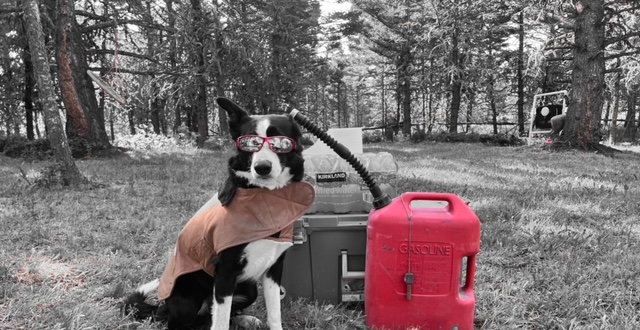Fewer than five minutes—four minutes and thirty-seven seconds, to be exact—had lapsed since the shots pinged across a Pennsylvania afternoon sky before the internet was flooded with so-called “conspiracy theories” regarding the attempted assassination of former President Donald J. Trump. Topping the initial lists of wacky ideas of who was to blame was, of course, Joe Biden.
Biden’s alleged involvement ran the gamut from his actually firing the shots from a rooftop to his having sent a PayPal payment to the father of the alleged shooter (not Biden) to purchase the AR-15 type rifle used in the incident. Beyond those theories mentioning Biden, the next most popular theory was that somebody, somehow staged last Saturday’s event. An old friend of mine from California who really needs to get a grip, posted this rendition:
When news originally broke on Saturday about an attempt on Trump’s life, I immediately smelled a rat and suspected the whole thing had been staged. I kept right on believing that until word filtered down about one rallygoer being killed and two others critically injured. Then I thought, well, apparently it’s real, even though Trump somehow had the presence of mind in the moment to thrust his fist into the air and shout, “Fight! Fight!” repeatedly just before being hustled offstage. Ever the showman.
How, I want to know, can you construct such an intricate conspiracy theory without mentioning Joe Biden? It can’t be done, which negates my friend’s theory.
Because Trump survived the attack with only the loss of some part of his ear, the reigning theory involves it being an act of God, which negates any insurance claim the former president might make. Trump believes he was “spared by God,” which makes me respond with “spare me.” All we need (again) is to have some deranged halfwit in the Oval Office who thinks he’s got God’s ear. (Sorry.) Nonetheless, Trump thinks all of this has given rise to a new plan to “bring the country together,” which demands we all wear little white MAGA pillows on our right ears.
Pledging to use this gift from God as impetus to bring the masses together to act as a unified nation where Republicans and Democrats are interchangeable parts of a political whole, Trump gave a rousing 15-minute acceptance speech Thursday night at the National Republican Convention and Pep Rally in Milwaukee. At minute sixteen, or thereabouts, he started his interminable whine about the election steal in 2020. He blathered on for another hour-and-a-quarter about his ear and the relationship he’s developed with the Supreme Being. He ended his part of the evening much like a municipal fireworks display ends a July 4 celebration: gather whatever’s left and blow it all to hell.
Conspiracy theorists love those plotlines that are the most fantastic and convoluted. The deeper the story cuts into reality, the better. If any aspect of the story can be reasonably supported by any level of plausibility, the further the theory can be advanced on not-so-doubting Thomases.
“We are in the process of the second American revolution, which will remain bloodless if the left allows it to be,” Kevin Roberts, the Foundation’ president, told the War Room, a podcast founded by Trump adviser Steve Bannon. In response, the Biden campaign accused Trump and his allies of “dreaming of a violent revolution to destroy the very idea of America.”
Thus introduces Project 2025, a Republican game plan for America’s future created by the Heritage Foundation, a group of right-wing, hand-wringing extremists led by a Colorado-based brewer named Coors.
The think-tank’s output is nearly 900 pages in length. Much of it was composed by former Trump insiders. It calls for the sacking of thousands of civil servants, expanding the power of the president, dismantling the Department of Education, sweeping tax cuts, a ban on pornography, halting sales of the abortion pill, and a whole lot more. It proposes that the entire federal bureaucracy, including independent agencies such as the Department of Justice, be placed under direct presidential control—a controversial idea known as “unitary executive theory.”
Trump, of course, while claiming to not know anything about Project 2025, has nonetheless disavowed the document.
“I know nothing about Project 2025,” Trump posted on his social media website, Truth Social. “I have no idea who is behind it. I disagree with some of the things they’re saying and some of the things they’re saying are absolutely ridiculous and abysmal.”
But wait! There’s more.
The document describes the FBI a “bloated, arrogant, increasingly lawless organization.” It calls for drastic overhauls of this and several other federal agencies, as well as the complete elimination of the Department of Education. It proposes slashing federal money for research and investment in renewable energy, and calls for the next president to “stop the war on oil and natural gas.” Current carbon-reduction goals would be replaced by efforts to increase energy production and energy security.
But the economic advisers suggest that a second Trump administration should slash corporate and income taxes, abolish the Federal Reserve and even consider a return to gold-backed currency.
Clearly, Project 2025 is the most complex and intriguing of all conspiracy theories.
The problem, of course, is that it isn’t a conspiracy theory.
Photo illustration by Courtney A. Liska







